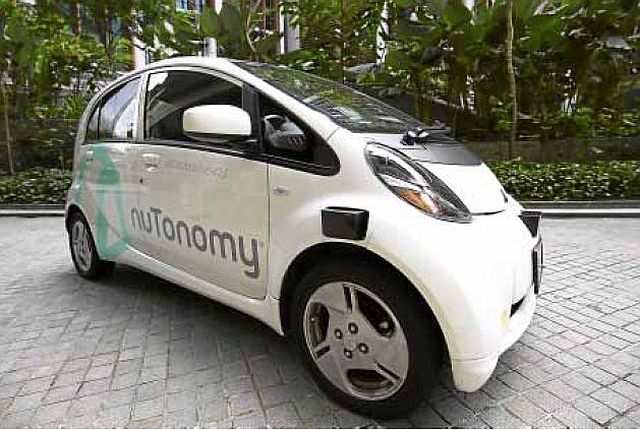
An autonomous vehicle will be picking up passengers on a test-drive in Singapore. Officials of nuTonomy aim to have a self-driving taxi fleet by 2018. (AP)
SINGAPORE — The world’s first self-driving taxis began picking up passengers in Singapore starting Thursday.
Select members of the public can hail a free ride through their smartphones in taxis operated by nuTonomy, an autonomous vehicle software startup.
While multiple companies, including Google and Volvo, have been testing self-driving cars on public roads for several years, nuTonomy says it is the first to offer rides to the public.
Its launch in Singapore is beating ride-hailing service Uber, which plans to offer rides in autonomous cars in Pittsburgh, by a few weeks.
NuTonomy is starting small — six cars now, growing to a dozen by the end of the year.
Ultimate goal
The ultimate goal, company executives say, is to have a fully self-driving taxi fleet in Singapore by 2018, to help cut the number of cars on Singapore’s congested roads.
Eventually, the model could be adopted in cities around the world, nuTonomy hopes.
For now, the taxis only run in a 6.5-square-kilometer business and residential district called “one-north,” and pickups and drop-offs are limited to specified locations.
Riders must have an invitation from nuTonomy to use the service. The company says dozens have signed up for the launch, and it plans to expand that list to thousands of people within a few months.
Driver, researcher
The cars — modified Renault Zoe and Mitsubishi i-MiEV electrics — have a driver in front who is prepared to take back the wheel and a researcher at the back who watches the car’s computers.
Each car is fitted with six sets of Lidar — a detection system that uses lasers to operate like radar — including one that constantly spins on the roof.
There are also two cameras on the dashboard to scan for obstacles and detect changes in traffic lights.
The testing time frame is open-ended, nuTonomy CEO Karl Iagnemma said.
Eventually, riders may start paying for the service, and more pickup and drop-off points will be added.